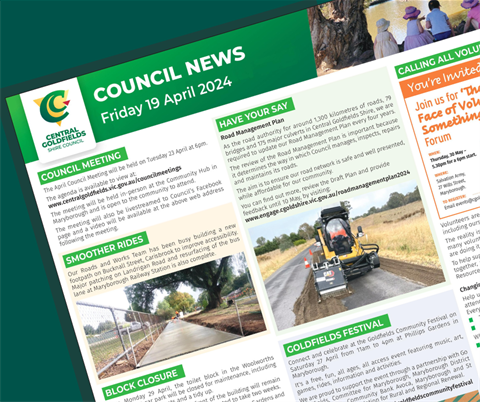
Key points:
|
Risk and change management limitations associated with the rollout of new trains in South East Queensland contributed to a near collision in Brisbane in 2019, an Australian Transport Safety Bureau investigation report notes.
On 25 March 2019, passenger train DW17 left Park Road Station when the departure signal was displaying a stop indication.
The New Generation Rollingstock (NGR) train with a driver, guard, and 41 passengers on board, exceeded its authority by 305 m and travelled through a merging conflict point. The merger point was being approached by a second train, which stopped short when that train’s crew detected the problem.
This was the first of six ‘start against signal’ SPADs involving NGR trains on Queensland Rail (QR)’s Citytrain network between March 2019 and April 2021.
A systemic investigation by the ATSB found limitations in QR’s change and risk management processes, specifically in relation to dispatch procedures involving platform staff and NGR train guards, increased the risk of such SPADs taking place.
“Prior to the rollout of NGR trains, there were five stations – three CBD and two suburban stations – where platform staff were required to provide an ‘allright’ signal to a train guard before the train could proceed,” ATSB Director Transport Safety Dr Michael Walker explained.
“Although platform staff at these locations were trained not to look at the departure signal prior to giving the ‘allright’ signal, as this was not their role, in practice platform staff were checking for the departure signal to be at proceed before giving this signal to train guards, creating the expectancy that the ‘allright’ signal was a reliable indication the departure signal was at proceed.”
The positioning of the guard at the rear of the NGR fleet is unique to the Citytrain network. This meant when the NGRs began operating in late 2017, platform staff were required at other suburban stations to assist passengers accessing the middle carriages, which are designated for disabled access.
In January 2019, QR amended its dispatch procedures to require platform staff at all suburban stations to issue the ‘allright’ signal for all NGR train departures, rather than just those with passengers who required assistance.
“Because the platform staff at these suburban stations followed procedure, and did not follow the informal practice of checking the status of the departure signal, train guards were now much more likely to receive an ‘allright’ signal while the departure signal was at stop,” Dr Walker explained.
“Multiple QR risk management and change management processes did not effectively consider the risk of this taking place.”
The final risk control in place to avoid SPADs under QR’s ‘stopped at red’ procedure was for the driver to check the departure signal after receiving the ‘rightaway’ signal (two bells) from the train guard.
The train guard was to provide rightaway to the driver after checking that the platform departure signal was at proceed – either by observing the aspect in the departure signal, or a signal aspect indicator (SAI) located on the platform if the departure signal was not visible by the guard.
“In this near collision occurrence, when the driver received the rightaway signal from the guard, they had a very high level of expectancy that this meant the departure signal was at proceed, and subsequently the train promptly departed the station platform and passed the signal while it displayed a stop indication,” Dr Walker said.
“Similarly, the guard incorrectly provided the rightaway signal to the driver based on a very high level of expectancy that the ‘allright’ signal, provided by platform staff, also meant the signal was at proceed.”
The ATSB noted that the same basic sequence then happened in another five start against signal SPADs at suburban station platforms involving NGR trains. The departure signal was at stop, the station staff correctly gave the allright signal to the guard when platform duties were complete, the guard incorrectly provided the rightaway signal to the driver while the departure signal was still at stop, and the driver then departed the platform without effectively checking and confirming the departure signal.
Dr Walker said operators should apply a formal change management process to assess the potential risk of a procedural change before determining that the change is minor in nature.
“Operators also should ensure they understand the undocumented or informal risk controls that are in place in their operation, and how exactly operational personnel are applying current procedures, prior to introducing changes,” he said.
“A commonly-overlooked aspect of risk management is the need to consistently monitor and review the health of risk controls, either existing or newly-introduced, through a variety of activities and to continuously look for opportunities to improve the operator’s risk position.”
Signal aspect indicators (SAIs) were installed on station platforms when a guard could not see the departure signal from their normal location. The rollout of the NGR trains meant a number of SAIs had to be installed or moved at platforms around the network, to account for the relocation of the train guard from the middle of the train on traditional type suburban passenger trains to the rear of the the train with the introduction of NGR services.
“QR’s process for installing the SAIs did not provide sufficient detail to ensure consistent and conspicuous placement of them at station platforms,” Dr Walker said. “This increased the risk that an SAI would not be correctly perceived by a train guard.”
The ATSB notes the rate of ‘start against signal’ SPADs has decreased in recent times, as guards become more familiar with the location of SAIs, and the new processes at suburban station platforms.
“The ATSB will continue to examine change management issues in current and future investigations,” Dr Walker concluded.
Finally, although not a contributing factor, the investigation found that a late-notice roster change meant the guard was probably experiencing a level of fatigue known to adversely influence performance.
As a result, QR issued an important safety notice to rail traffic crew and rostering personnel regarding unplanned shifts and required that rostering personnel complete a checklist when arranging unplanned shifts with less than 12 hours prior notice.
You can find here the report: RO-2019-009 Signal DP29 passed at danger involving suburban passenger train DW17 and near collision with another suburban passenger train Park Road Station, Queensland, on 25 March 2019
Last update 29 March 2022







